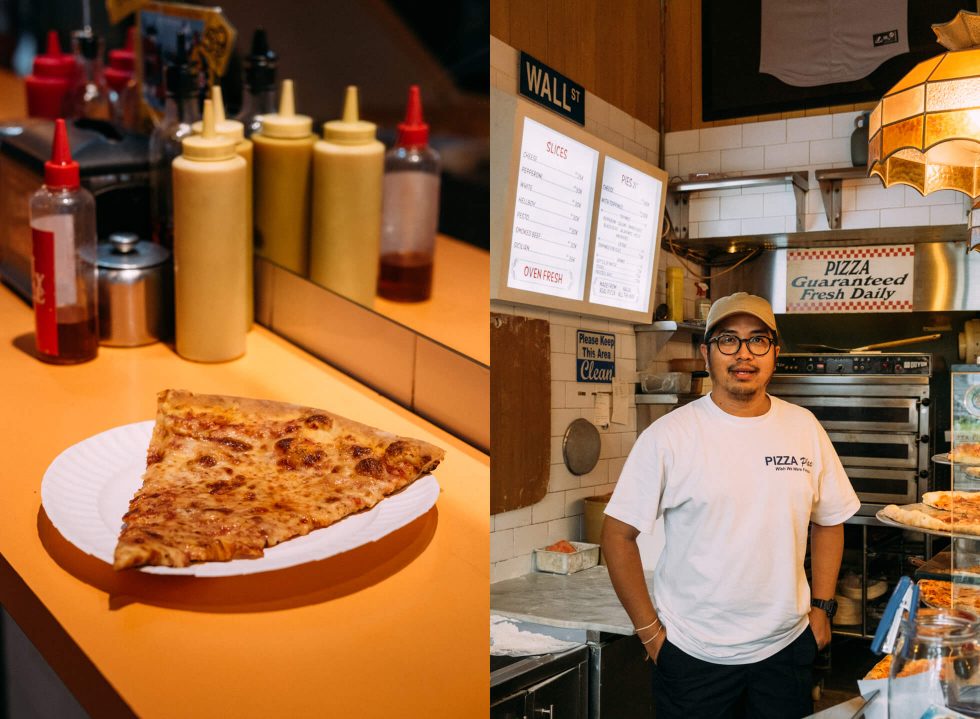While pizza originated from Italy, the concept of flatbread-with-topping has spread to other cultures and grown on different soils to become many breeds. The dish isn’t a novelty to Jakarta where it’s offered in fast-food chains and established restaurants, but a new enthusiasm for pizza was introduced to the market by Pizza Place, a local eatery with the esteem of bringing the New York-style cheesy pies for a one-hit-wonder.
In the Pizza Place joint located in Como Park, Kemang, the pizza display flaunts large, thin-crust pies cut in eight giant slices, ready to be sold by the piece at IDR 25,000 for the regular cheese and upwards of IDR 30,000 for the topping ‘za.
Pizza Place co-owner, Yogo, was a New York resident when he noticed something ironically special about New York pizza: “If you want to be honest, mainstream pizza in New York is not extraordinarily tasty,” he said. Unlike Neapolitan pizza (the original Italian cheese and tomato pizza on the thin, individually-portioned crust), New York found its own rendition by adapting the staple to urban lifestyle demands. The pies are baked daily and bigger, clocking in at 45 cm in diameter for faster production, relies on hand-tossed dough high in gluten for the signature pizza pliability and chew, and uses shredded low-moisture mozzarella instead of the freshly sliced cheese and garnished with toppings—all summing up to the delicious and inexpensive meals to look forward to from Pizza Place. “While we’re not the first to sell pizza by the slice, [Pizza Place] is the first to tribute that New York craft in Jakarta,” Yogo continued.
Even for their quintessential cheese pie, skills are required. To master the craft, especially the dough and hand-tossing technique, every pizza maker at Pizza Place are trained for six months under the tutelage of co-owner Angga, who was already a professional before this current venture. “The dough alone took more than a year to develop and sometimes it still feels like we’re not fully there yet,” said Yogo.
Yogo admits a shared sentiment among pizza makers at large that time is not the only essence of experience: “Some days are good, some days the oven is moody and other days the air is not cooperating with the dough. I think for every one hundred pies you make, only nine or ten come out just the way you want them.”
Still, even though not all pizzas are perfect in the eyes of its maker, as an establishment, Pizza Place successfully hauled customers in since the day they opened doors in 2017. The first Kemang joint that sits a total of 7-8 persons flies out nearly a hundred pies a day and double that on weekends for a grand total of 500 to 700 individual slices being sold daily to their stream of customers that range from school teenagers to white collars. And that’s only calculations for a single pizzeria out of six, the latest one being in Bandung.
“The big single slice and on-the-go style are not a custom to Indonesians who are more familiar with thick pies to share,” Yogo noted, but through word of mouth marketing and none of the “big stunts,” people have adapted with ease to the New York-style deal at Pizza Place. As showcased by the numbers, the one-hit-wonder even inspired similar businesses to pop up in Jakarta. But as for Yogo and his partners, contenders take a backseat concern: “We’re replicating a tried and tested model and it works. But if we want to become that authoritative figure in joint pizzerias locally, we have to aim for the 15-year mark before we can call Pizza Place a true success.”












